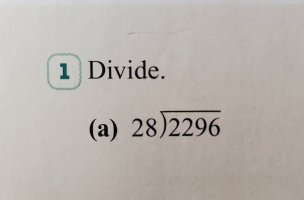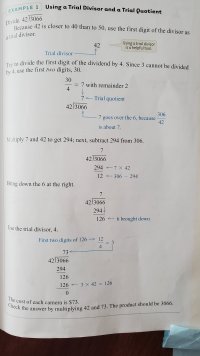I can't figure out how they got 82 using trial quotient in this long division problem. I know the answer is 82, but I don't understand the steps to get there. I'll post a picture of the problem first then the guide they gave me.

I get stuck on the first part when divide the 22 by 3 its 7, not an 8 to end up with 82. Hmmm. I'm so confused.


I get stuck on the first part when divide the 22 by 3 its 7, not an 8 to end up with 82. Hmmm. I'm so confused.
